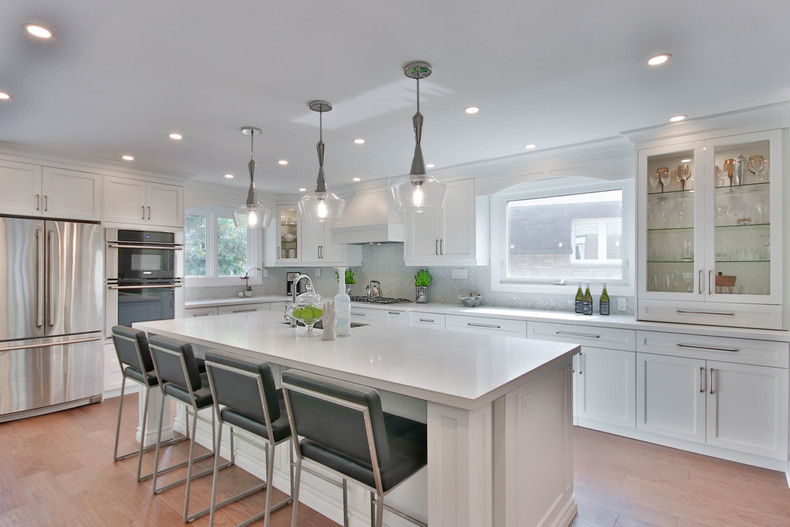Essential Aspects to Consider When Choosing Legs For Cooking Area Island
Choosing the proper legs for a kitchen area island entails a careful evaluation of several aspects that can substantially affect both performance and visual charm. Amongst these, the option of product plays a critical role in making sure resilience, while the layout must match the existing design. In addition, factors to consider such as elevation and weight support are essential for stability and comfort. As we discover these aspects, it ends up being clear that each choice can have significant ramifications for the total kitchen experience. What subtleties should be taken into consideration in each of these groups to accomplish the excellent balance?
Product Options
When picking legs for a cooking area island, recognizing the numerous material choices is crucial for accomplishing both visual allure and architectural stability (Legs For Kitchen Island). The selection of material considerably affects not just the durability of the island but additionally its overall design and capability
Metal legs, often made from stainless steel or wrought iron, add a modern and commercial feeling while guaranteeing longevity and security. These materials are resistant to use and can sustain considerable weight, making them ideal for bigger islands.
One more alternative is crafted materials, like MDF or plywood, which can be more economical while still using a variety of surfaces. They may not offer the exact same level of security as strong timber or metal. Legs For Kitchen Island. Last but not least, products such as acrylic or glass can develop a contemporary look, though they may call for extra support to make sure security.
Inevitably, the selection of product for kitchen island legs must line up with the desired capability and the overall motif of the cooking area.
Design and Design

When taking into consideration design, the form and coating of the legs are critical. Tapered legs can provide a sense of agility and beauty, while thicker, a lot more robust legs can share stamina and security. Furthermore, the finish-- be it painted, tarnished, or all-natural-- should enhance the cabinetry and counter top materials to produce a unified appearance.
In addition, the design of the legs can also reflect individual preference. Custom-made or attractive legs, such as those including detailed carvings or one-of-a-kind geometric shapes, can work as prime focus, adding personality and individuality to the kitchen area. Inevitably, the right option will not only improve functionality yet also raise the visual allure, making the cooking area island a standout attribute of the home.
Height Factors To Consider
Selecting the suitable elevation for kitchen island legs is essential, as it straight affects both functionality and comfort. The standard elevation for a cooking area island typically varies from 36 to 42 inches, aligning with usual countertop elevations.

It is likewise vital to make up individuals' elevations and preferences. Personalizing the elevation can guarantee a comfortable experience for all member of the family, making the cooking area island a more delightful and practical room.
Weight Support
Guaranteeing sufficient weight assistance for kitchen area island legs is vital for both safety and security and functionality. The cooking area island typically serves numerous functions, consisting of food prep work, eating, and additional storage space, necessitating a durable assistance framework. When choosing legs, it is essential to consider the general weight capability required based upon the island's meant use and the products that will certainly be put on it.
The selection of material for the legs plays a significant duty in their weight-bearing capacities. Strong timber, steel, and heavy-duty composites typically supply premium toughness contrasted to lighter products. check out here In addition, the layout of the legs-- whether they are straight, tapered, or have a pedestal kind-- can influence their ability to disperse weight effectively throughout the framework.
Constantly speak with the manufacturer's specifications relating to tons limits to ensure that the legs can sustain the designated weight without endangering security. In summary, selecting kitchen area island legs with ample weight support is important for developing a practical and safe culinary space.
Installation and Maintenance
Proper setup and upkeep of cooking area island legs are vital for ensuring durability and security. To start, it is necessary to comply with the producer's guidelines during installation. This frequently involves safeguarding the legs to the island base using ideal fasteners, guaranteeing that the legs are degree and lined up. Using a degree device can aid avoid wobbling and improve the total visual charm of the kitchen area island.
As soon as installed, routine upkeep is necessary to maintain the integrity and appearance of the legs - Legs For Kitchen Island. For wooden legs, routine cleaning with a damp fabric and application of appropriate wood polish can protect against dampness damage and preserve their finish. Metal legs might require a gentle cleaning remedy to remove grease and grime, complied with by a dry cloth to avoid corrosion formation
Additionally, inspect the legs consistently for indicators of wear or damages, such as fractures or loosened joints. Tightening screws or bolts as needed can also extend the life expectancy of the legs. By sticking to these installment and maintenance practices, property owners can make sure that their kitchen island remains durable and aesthetically appealing for several years to find.
Conclusion

Aesthetic coherence is vital in picking the style and layout of legs for a kitchen area island, as these elements greatly influence the overall atmosphere of the area. Conical legs can supply a feeling of lightness and elegance, while thicker, a lot site here more robust legs can communicate stamina and stability.Picking the suitable height for kitchen island legs is critical, as it straight affects both capability and convenience. In summary, choosing cooking area island legs with sufficient weight assistance is vital for developing a functional and secure cooking space.
In final thought, picking legs for a cooking area island necessitates careful consideration of different factors, including product choices, design, elevation, weight support, and installment.